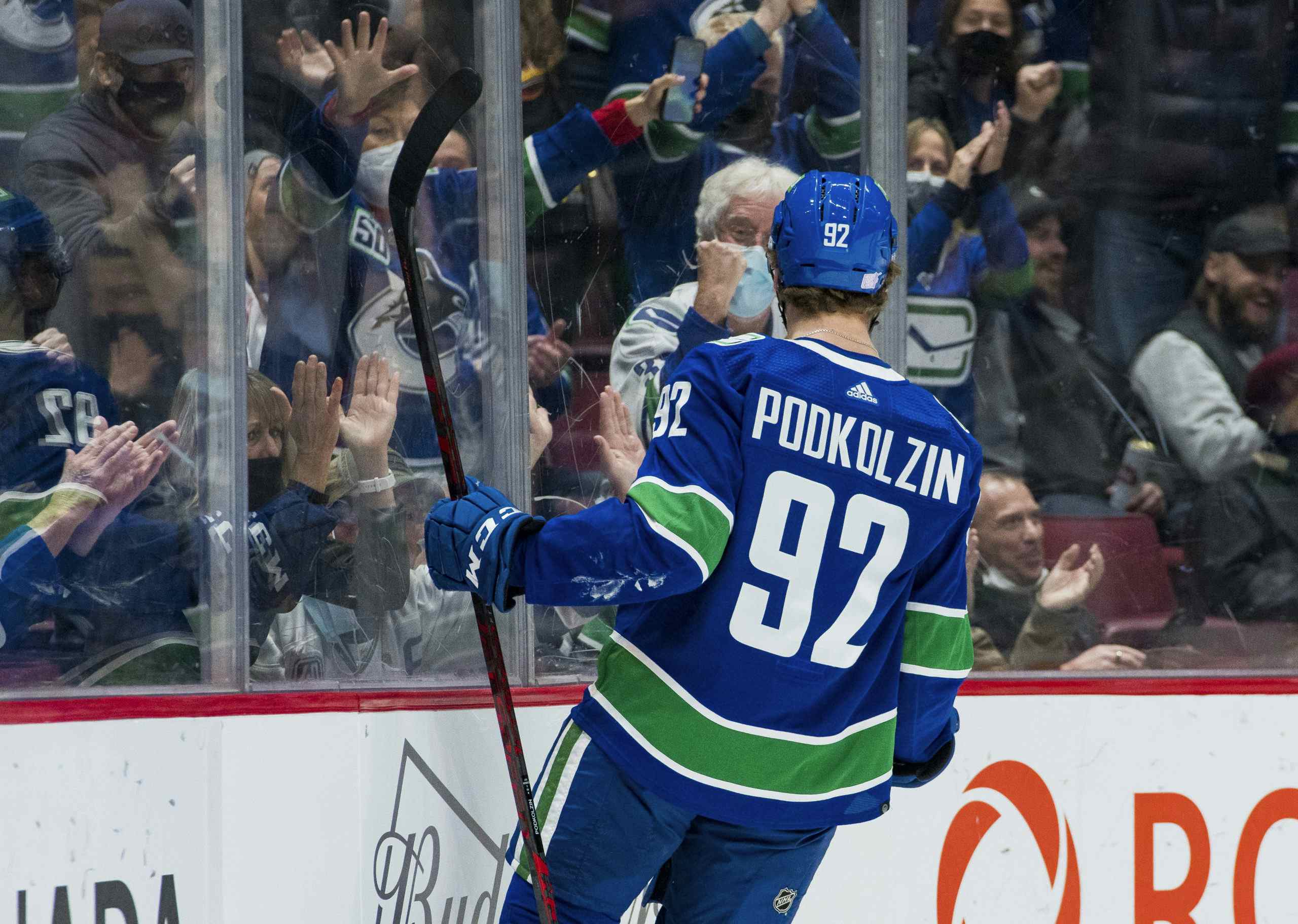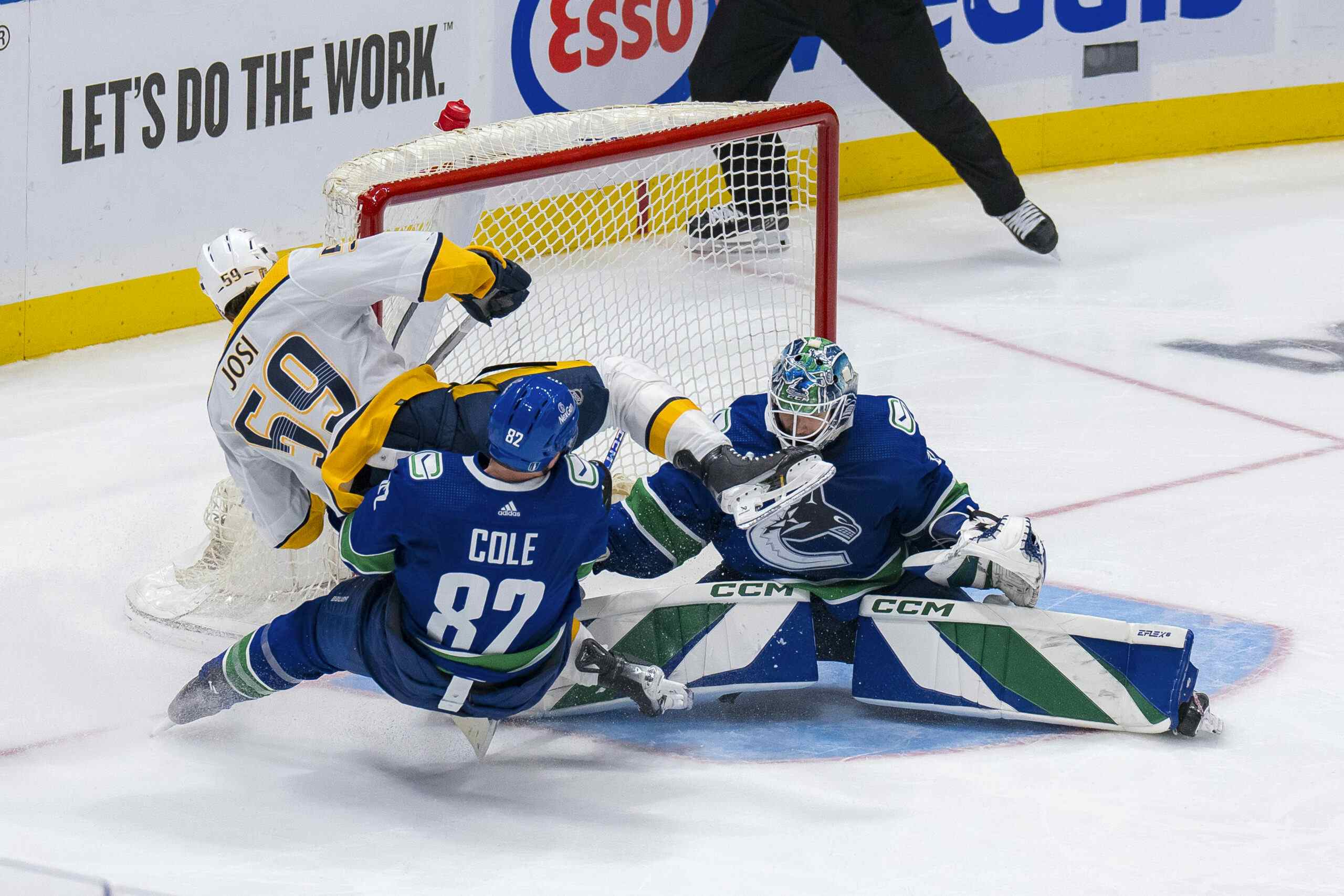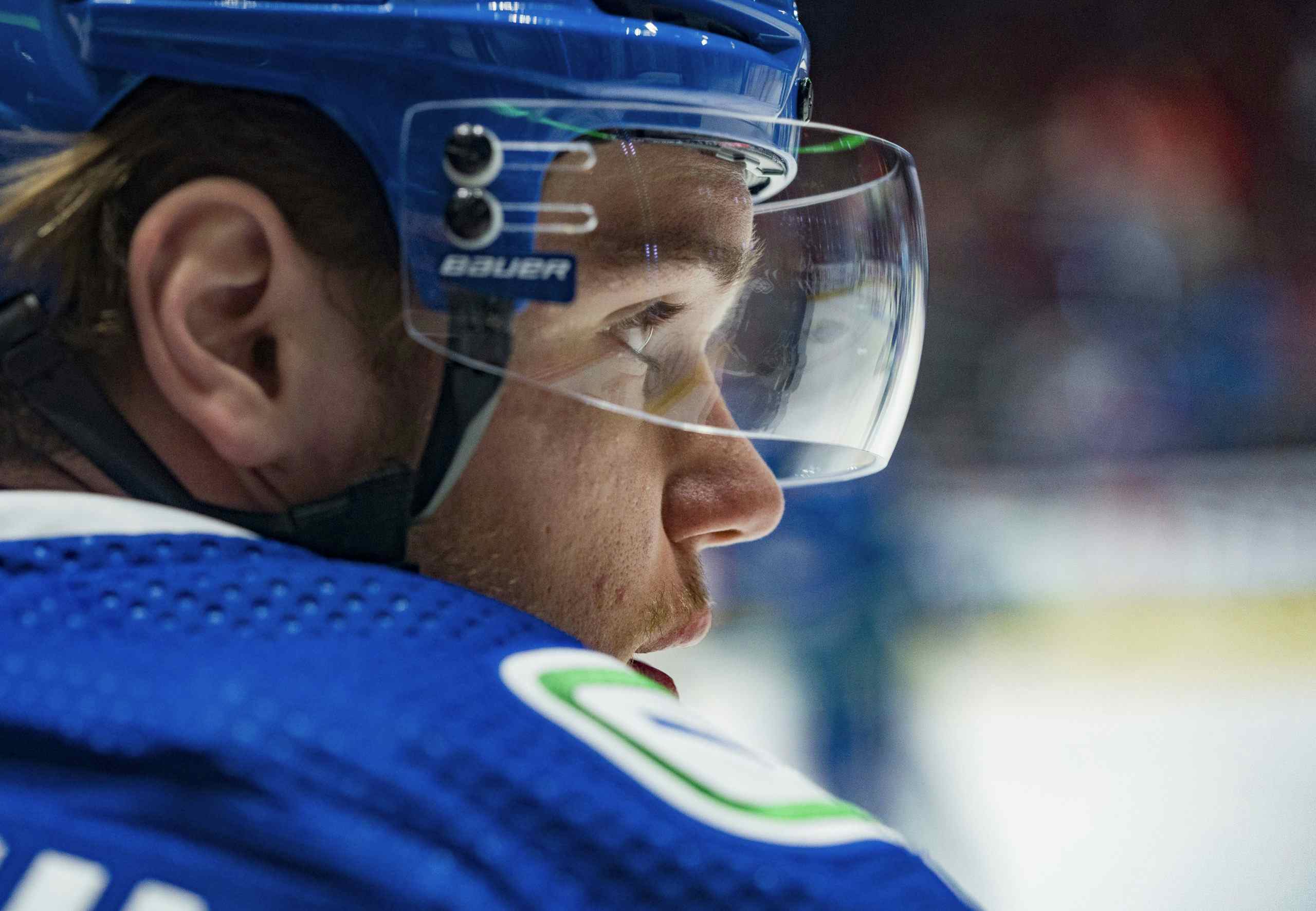Paying for intangibles
By Satiar Shah
7 years agoThe Vancouver Canucks enter the heart of the off-season with little room for error, as they continue towards their goal of remaining competitive while all the while building towards the future. They’ve already invested significant assets and cap space on players expected to help them get back into the playoffs. There’s also no disputing that the Canucks are trying to find the future stars in the draft. Through both avenues of talent mining, they emphasize intangibles, like character, toughness and leadership — virtuous and undoubtedly important attributes.
What remains in dispute, though, is the value surrendered, be it in terms of salary cap space or assets surrendered, for players who don’t meet the investment in goals. Canucks GM Jim Benning and President Trevor Linden have invested heavily in players like Erik Gudbranson and Brandon Sutter, parting with draft picks and players on favourable contracts, like Nick Bonino and Jared McCann, placing unnecessary constraints on their ability to stockpile at the draft and spend in free agency.
The Canucks are now in a position where they will look to spend most of the team’s cap space on a goal scoring free agent forward and search for fewer needles in the drafts haystack with fewer picks to spend. It’s all a work in progress, but we can explore the price paid at Rogers Arena in the interim.
For better or worse, the Canucks mandate is to remain as competitive as possible as they stockpile young talent in the draft throughout the process. That’s not changing anytime soon. The central issue is whether their execution of this plan and whether it will be successful — though they’ve taken steps forward in that regard already with the addition of Gudbranson and projected improvement of Sven Baertschi, Bo Horvat, Jake Virtanen and Ben Hutton.
Benning’s armed with another $9-million in cap space and is looking for a big name scoring forward to spend most of it on. The Canucks aren’t even close to finished tinkering with this roster. They need to hit the jackpot with that investment and have several of their key young players avoid the dreaded sophomore slump for it all to come together. That’s what has to happen for the Canucks to fulfil their goal of being a playoff team. That’s a small margin for error if there ever was one.
Some will counter that these constraints are worth it. Or that — possibly correctly — Sutter and Gudbranson bring value beyond what their stat sheets and underlying metrics show. In essence, Benning and Linden believe Gudbranson and Sutter, along with Derek Dorsett and Luca Sbisa agree with that sentiment. There’s no measuring intangibles like character, leadership and toughness, but winning clubs will tell you they’re crucial to their success. Therefore, the only way to measure the importance or effectiveness of them is by winning.
As valuable as these intangibles may be, they do come at a cost, thus creating a question of efficiency. Are the Canucks getting the most out of the assets they’ve invested in since Benning and Linden have taken over?
The only way to answer this is by considering what the Canucks have given up for players currently on the main roster:
Assets Traded Assets Received
2nd Round pick 3rd Round pick
2nd Round pick 5th Round pick
2nd Round pick Sutter
2nd Round pick Gudbranson
3rd Round pick Baertschi
3rd Round pick Etem
4th Round pick Vey
5th Round pick Sbisa
7th Round pick
McCann/Kesler
Bonino
Clendening/Forsling
Jensen
Clearly Canucks management has spent a significant amount of assets on the players they’ve added via trade since taking over from the maligned Mike Gillis regime but the organization is also spending a significant amount of cap dollars on the players they’ve acquired over the past couple of years. When you factor in the extension the organization gave Chris Tanev in 2015, the Canucks are spending a significant amount of their salary cap on players who did not produce much in the way of goals last season:
Canucks Salary Goals Games
Tanev $4.45M 4 69
Sutter $3.30M 5 20
Sbisa $3.60M 2 41
Gudbranson $3.50M 2 79
Dorsett $2.65M 5 71
Total: $17.50M 18 280
Now Chris Tanev is an excellent top 4 defenseman who can play on any team in the NHL so there is nothing wrong with the value of his contract, and given that Sutter missed 62 games last season due to a variety of injuries, that list doesn’t truly present the overall value of what those players bring to the table, especially when you consider the Gudbranson’s supposed value as a heralded defensive presence with a fair bit of nastiness.
However, that does not mean that the Canucks are getting good value in the aggregate because those five players combined for a goal per game average of 0.064, meaning an average of 5.25 goals every 82 games. That’s paltry production for a cost of $17.5 Million per season, which wouldn’t necessarily be a problem if Alex Edler and Ben Hutton weren’t the Canucks only defensemen who have proven they can make an offensive impact.
The only way to ascertain whether this is efficient or out of ordinary is by comparing the output from Sutter, Gudbranson, Tanev, Sbisa and Dorsett to that of players of similar ilk or circumstance on the other 29 teams in the NHL. The only team that spent north of $15 Million per season on five players that produced less than .064 goals per game, like the group of five on the Canucks, was the Ottawa Senators:
Senators Salary Goals Games
Phaneuf $7M 4 71
Methot $4.9M 5 69
MacArthur $4.65M 0 4
Neil $1.7M 5 80
Borowiecki $1.1M 1 63
Totals: $19.35M 15 287
The Sens will be paying $19.5 Million next season to five players who combined for a goal per game average of 0.052, which comes out to 4.26 goals for every 82 games played. There were only three other teams that have committed more than $15 Million total on five players for next season with a goal per game average under .08. Those teams are:
Lightning Salary Goals Games
Carle $5.5M 2 64
Coburn $4.1M 1 80
Garrison $4.6M 5 72
Callahan $5.8M 10 73
Filpulla $5M 8 76
Totals: $25M 26 365
GPG: 0.071
Capitals Salary Goals Games
Winnik $2.25M 6 76
Niskanen $5.75M 5 82
Orpik $5.5M 3 41
Alzner $2.8M 4 82
Beagle $1.75M 8 57
Totals: $18.05M 26 338
GPG: 0.077
Rangers Salary Goals Games
Staal $5.7M 2 77
Girardi $5.5M 2 74
McDonagh $4.7M 9 73
Klein $2.9M 9 69
Glass $1.45M 4 57
Total: $20.25M 26 350
GPG: 0.074
All three of these teams made the playoffs last year but the Rangers are in a tough spot with their big commitments to Eric Staal and Dan Girardi. The comparable players on the Lightning and Capitals are only slightly more efficient than the Canucks but the major difference between these teams is that Tampa Bay and Washington have a bevvy of star players such as Alex Ovechkin, Nicklas Backstrom, Evgeny Kuznetsov, Nikita Kucherov, Tyler Johnson, Jonathan Drouin and Victor Hedman.
The Lightning and Capitals built their teams through the draft and they’ve complemented star players with guys who fit specific roles, going as far as overpaying for players like Callahan to put themselves over the top. The Canucks, on the other hand, are banking on Sutter to be a 20 goal scoring 2nd line centre and Gudbranson to be a top 4 defenseman whose presence will unlock Hutton’s scoring potential.
On Friday, the Canucks will enter the draft with only 2 picks in the first 4 rounds with a 1st and 3rd round pick and now the team is in a position where it’s looking to add more picks via trade. Unless management moves a prospect like Jordan Subban or works out trades for players such as Burrows, Sbisa and Higgins, the Canucks will have a difficult time adding picks without moving valuable commodities such as Hansen or any of the prized youngsters on the team. You can get around not having a tonne of picks by hitting on the selections you do have but there isn’t much you can do on the trade front if you don’t have enough assets you’re willing to trade if needed.
The Canucks are not completely bereft of scoring, the Sedins will still produce points, Horvat is only getting better, Baertschi’s 15 goals last season showed promise and his new $1.85 Million annual salary for the next two seasons could end up being a major bargain. Benning has repeatedly stated his desire to be active in free agency but how he spends that money will go a long way in determining whether the Canucks can be more competitive next season since the organization can ill afford to invest significant cap space on a player who does not help them score more goals. The Canucks have enough grit, character and leadership, all they need now is more skill.
Recent articles from Satiar Shah





